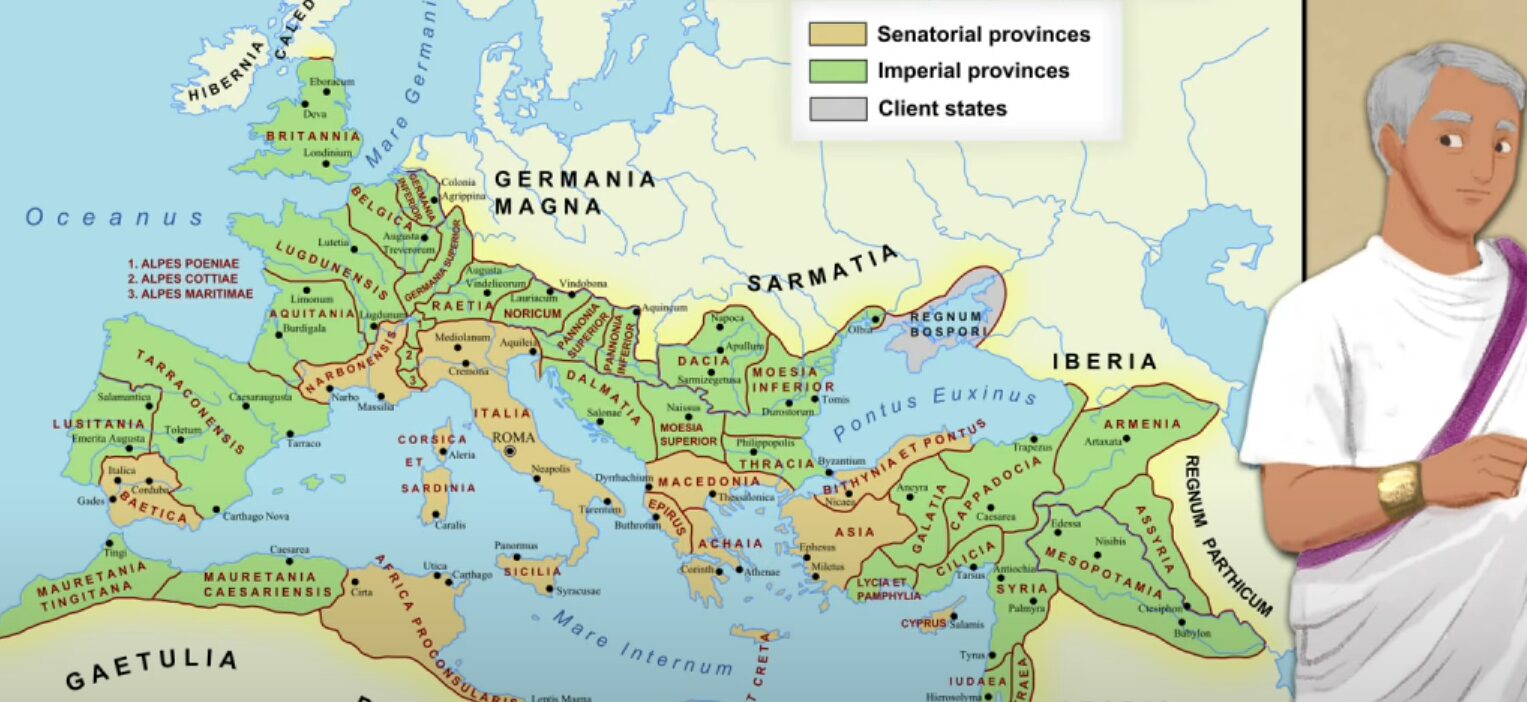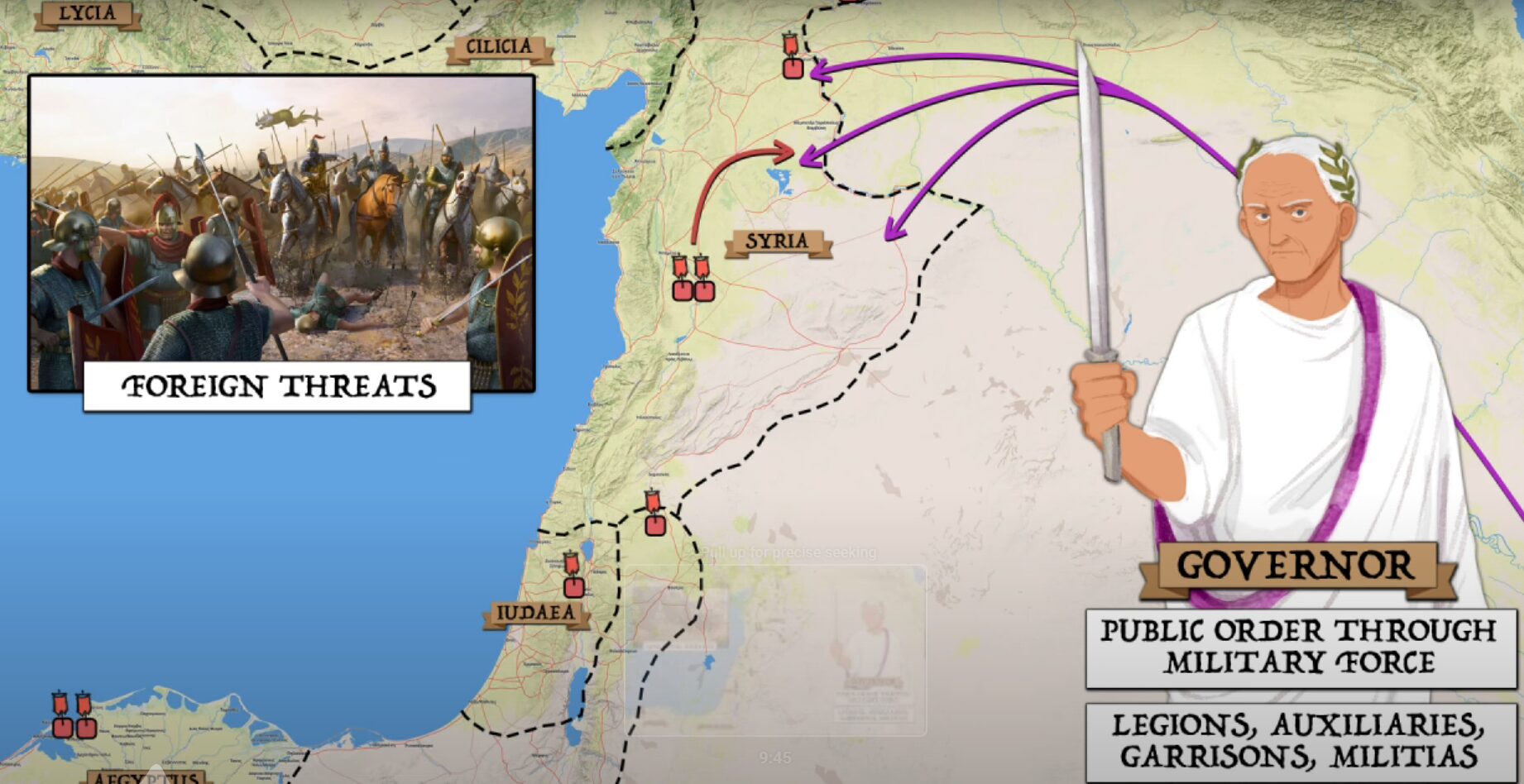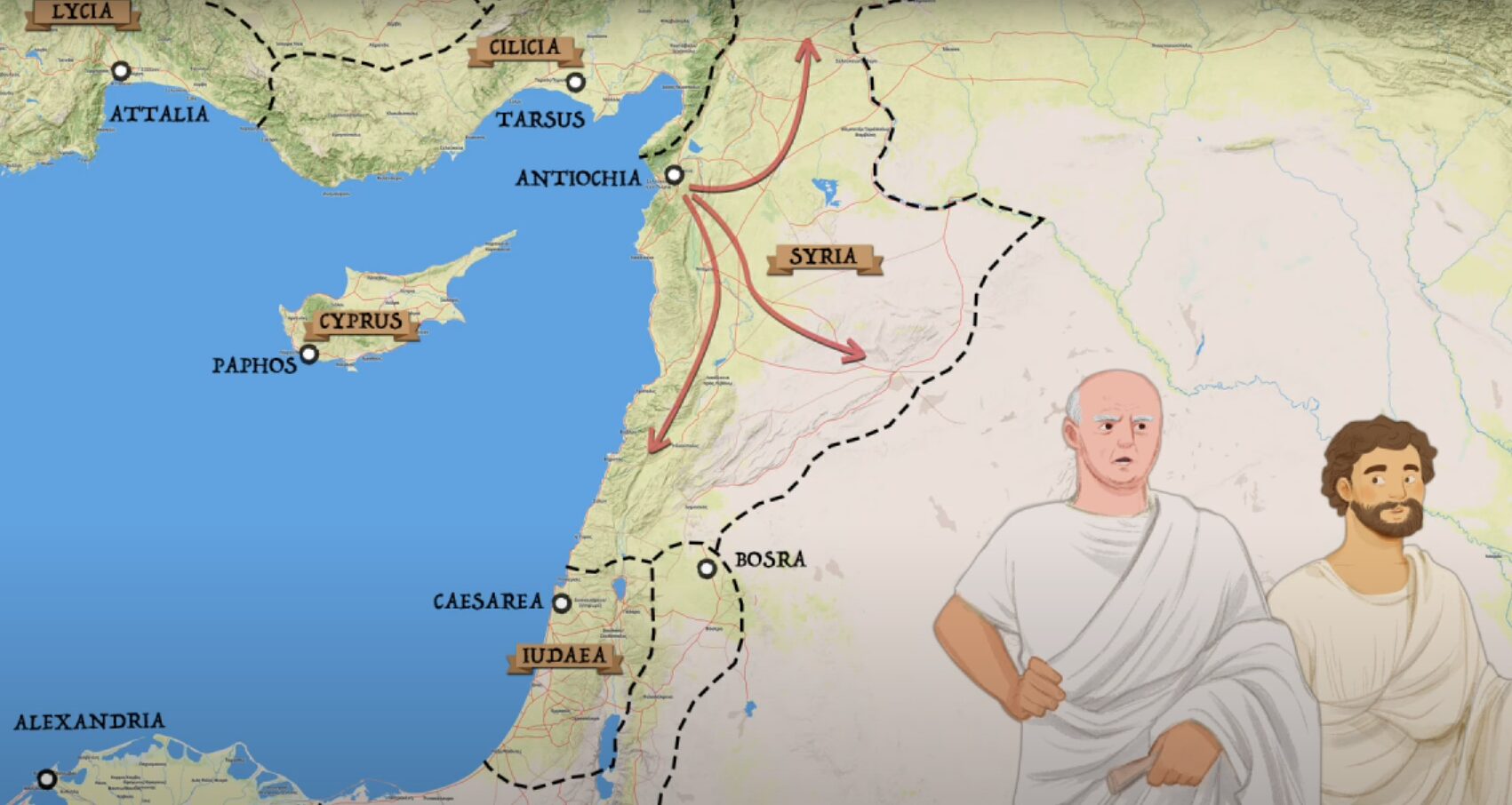The Roman Empire built a vast system to keep peace across its many regions. These provinces, spread over lands equal to dozens of modern countries, were the backbone of Rome’s control. Each province had its own governor, staff, and local leaders who managed daily life while following Roman law. Over time, this structure allowed Rome to maintain order without constant interference from the capital.
Local communities often kept their own traditions and leaders, as long as they stayed loyal to Rome. This balance between local freedom and imperial authority helped the Empire function smoothly. Records like the letters between Pliny the Younger and Emperor Trajan show how governors sought guidance to apply Roman law fairly and consistently.
Key Takeaways
- The Roman Empire used provinces to manage its vast territories.
- Local leaders handled daily governance under Roman oversight.
- Communication between governors and emperors ensured consistent law enforcement.
Origins of the Roman Provinces
Early Growth and Local Agreements
Rome’s earliest control outside its city came through alliances and treaties rather than fixed borders. Communities across Italy entered into agreements that tied them to Rome while keeping some independence. These arrangements created a loose network of allies, not formal provinces. At this stage, provincia referred only to a general’s assigned area of duty, not a permanent region.
| Term | Meaning in Early Rome |
|---|---|
| Socii | Allied communities bound by treaty |
| Provincia | A commander’s area of responsibility |
| Imperium | Legal authority granted to a magistrate |
Establishment of Provincial Territories
As Rome gained new lands through war, it began to reuse wartime boundaries as administrative zones. After the First Punic War, the islands of Sicily, Sardinia, and Corsica became the first true provinces. Each province was placed under a governor with imperium, supported by a small staff.
- Governors were usually consuls or praetors serving one-year terms.
- Some remained longer as Rome’s territories expanded.
- Provinces were expected to maintain order, collect taxes, and uphold Roman law.
This system allowed Rome to manage distant lands while keeping a consistent structure of authority.
Shift from Republic to Imperial Rule
When the Republic ended, Augustus reorganized the provinces to secure his power. He kept control over the Imperial Provinces, which included border regions with active legions. The Senate oversaw the Senatorial Provinces, usually peaceful areas with few troops.
| Type of Province | Controlled By | Main Feature |
|---|---|---|
| Imperial | Emperor | Military zones with legions |
| Senatorial | Senate | Interior areas with little military presence |
Over time, Rome added new territories and adjusted boundaries. This flexible system helped the Empire maintain stability and extend Roman administration across vast regions.
Administrative Structure of the Provinces
Provinces under the Senate
These territories were managed by officials chosen by the Senate. They were usually peaceful, located inland, and did not host many legions. Proconsuls governed these regions for limited terms, often one year. Their main responsibilities included collecting taxes, maintaining order, and ensuring local governments followed Roman laws.
| Feature | Description |
|---|---|
| Control | Senate-appointed governors |
| Military Presence | Minimal or none |
| Examples | Older, stable territories in the interior |
| Governor Title | Proconsul |
Provinces under the Emperor
The Emperor directly controlled the frontier regions, where most legions were stationed. These imperial provinces were more militarized and strategically important. The Emperor appointed legates or procurators to govern them in his name. These officials enforced imperial policies, supervised troops, and kept communication lines secure.
| Feature | Description |
|---|---|
| Control | Emperor and his representatives |
| Military Presence | Strong; stationed legions |
| Examples | Border regions or new conquests |
| Governor Title | Legate or Procurator |
Duties and Authority of Governors
Governors held the highest authority within their provinces. They were supported by small staffs that helped manage administration and justice. Governors often traveled to different cities to hold courts, oversee tax collection, and address disputes.
They could consult the Emperor for advice on unclear legal matters. Surviving letters, such as those between Pliny the Younger and Emperor Trajan, show how governors sought approval for difficult decisions. This exchange illustrates the balance between local autonomy and imperial oversight that kept the provinces stable.
Local Governance And Autonomy
Urban and Rural Administration
Cities and villages across the provinces managed most of their daily affairs without heavy Roman oversight. Local councils handled tax collection, public works, and law enforcement. Governors and their aides visited when needed, but routine governance stayed with the community.
| Level | Main Responsibility | Example Role |
|---|---|---|
| Governor | Oversaw justice, taxes, and order | Provincial leader |
| City Council | Managed local funds and projects | Magistrates or elders |
| Village Officials | Handled disputes and farming issues | Local headmen |
Preservation of Community Traditions
Many towns kept their customary laws and religious practices after coming under Roman control. Local leaders continued familiar festivals and civic rituals as long as they did not challenge Roman authority. This approach reduced unrest and encouraged cooperation between residents and imperial officials.
- Local festivals often honored both native and Roman gods.
- Traditional councils remained active in community decisions.
- Roman approval was only required for major legal or political matters.
Roman Impact on Local Leadership
Roman rule reshaped local politics by blending imperial authority with native systems. Governors held imperium granted by the Senate or Emperor, but they relied on local elites to carry out orders. These elites acted as intermediaries, collecting taxes and enforcing laws while maintaining their social status.
Imperial provinces near borders had stronger military oversight, while senatorial provinces in the interior enjoyed greater freedom. Over time, this balance allowed Rome to maintain stability across vast territories with minimal direct control.
Law and Order in the Provinces
Maintaining Peace and Justice
Provincial governors held the highest authority in their regions. They managed security, legal disputes, and tax collection with help from small staffs. These officials often worked from major cities but traveled widely to handle cases and enforce laws.
Local communities usually kept control over their own affairs. Cities and villages managed internal issues through their councils, while serious matters could be appealed to higher Roman officials. Roman oversight existed, but the Empire preferred local stability over constant interference.
Systems of Tax and Revenue
Each province contributed taxes to Rome through a structured system. Governors supervised tax collection, but local administrators often handled the details. Payments could include land taxes, customs duties, or tribute from conquered peoples.
A simple outline of key responsibilities:
| Role | Main Duty |
|---|---|
| Governor | Approves and oversees taxation |
| Local Officials | Collect and record payments |
| Imperial Treasury | Receives and manages provincial revenue |
This system balanced Roman control with local participation, helping maintain both order and loyalty.
Correspondence With the Emperor
Governors sometimes sought direct guidance from the Emperor on unclear legal or moral issues. Letters between provincial leaders and emperors, such as those between Pliny the Younger and Trajan, show how this communication worked. Governors explained their actions and asked for confirmation or advice, while the Emperor’s replies set precedents for future cases.
This exchange ensured consistency across vast territories. It also reinforced the emperor’s role as the final authority in provincial governance.
Case Study: Pliny the Younger and Emperor Trajan
Administrative Letters Between Governor and Emperor
Pliny the Younger served as a provincial governor under Emperor Trajan. When he faced uncertain legal or administrative matters, he wrote directly to the emperor for direction. These letters show how governors sought imperial approval before making major decisions.
| Role | Responsibility |
|---|---|
| Pliny (Governor) | Maintained law, order, and taxation in the province |
| Trajan (Emperor) | Reviewed and confirmed provincial decisions |
This exchange shows how communication upheld consistency across distant territories while still allowing local flexibility.
Judicial Guidance and Legal Standards
The correspondence between Pliny and Trajan highlights how imperial responses shaped local legal practice. Pliny asked for advice when unsure how to apply Roman law, especially in unfamiliar cases. Trajan’s replies avoided strict rules, instead giving principles to guide judgment.
- Governors could act within reason but had to report major cases.
- The emperor’s answers became informal precedents for others to follow.
- This process helped maintain uniform justice across provinces.
Approach to Religious Communities
One of Pliny’s letters described trials of people accused of being Christians. He asked whether their faith alone counted as a crime or if only related actions were punishable. Trajan’s response instructed him not to hunt them out but to punish those proven guilty if they refused to honor Roman gods.
Key points from Trajan’s reply:
- No active pursuit of Christians.
- Pardon for those who renounced their faith and worshiped Roman gods.
- Rejection of anonymous accusations.
This exchange shows a measured approach to managing minority groups—balancing public order with limited tolerance within the empire’s legal framework.



